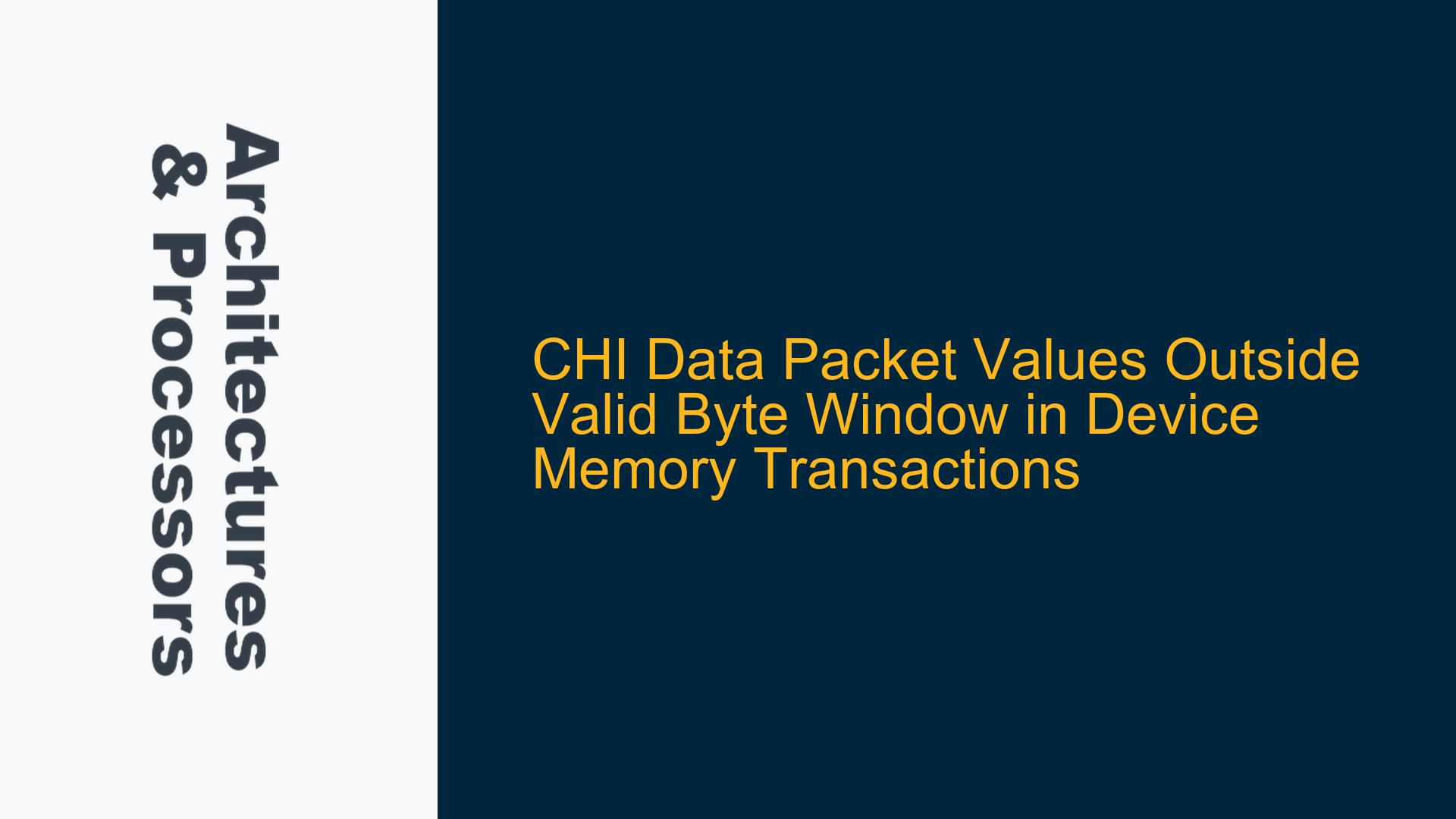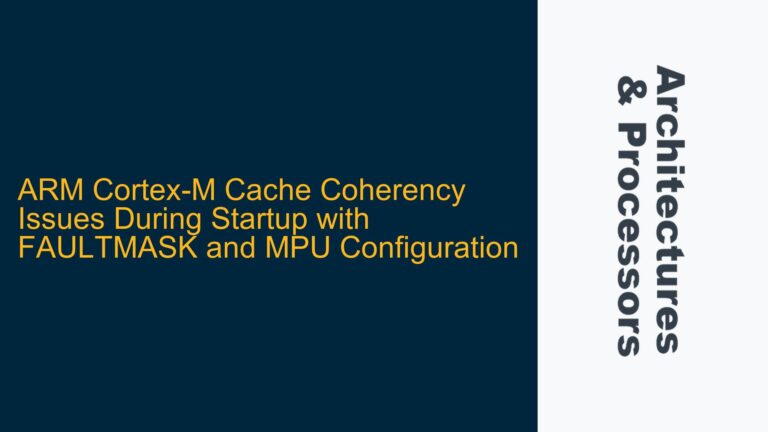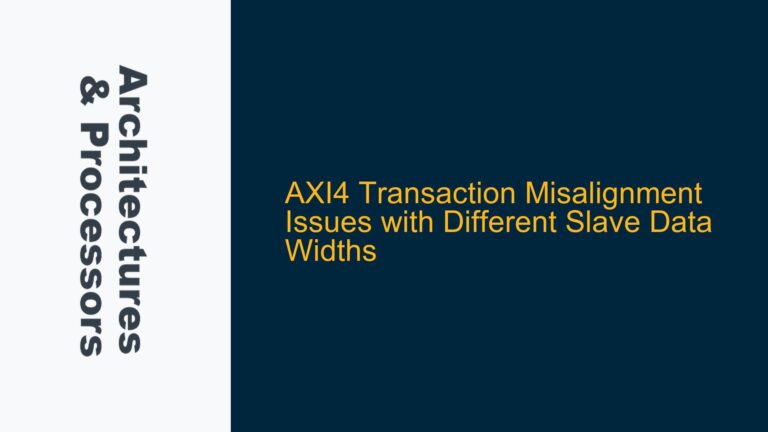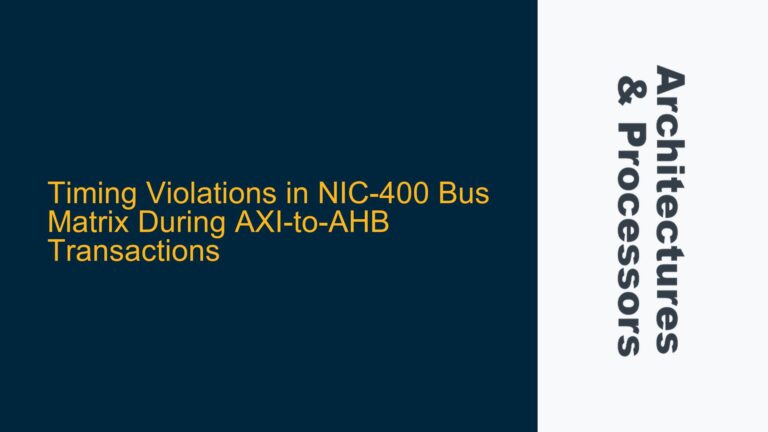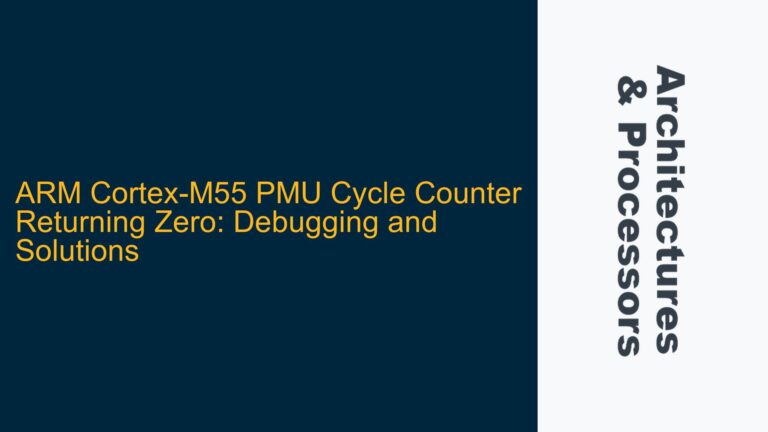CHI Read Data Packet Handling in Device Memory Transactions
In ARM’s Coherent Hub Interface (CHI) protocol, handling read data packets for Device Memory type transactions can present unique challenges, particularly when the returned data size does not match the expected transaction size. This issue arises because Device Memory transactions do not support byte-level enables for read operations, unlike other memory types. When a read transaction requests 64 bytes of data but only 14 bytes are valid, the protocol must define how the remaining bytes in the data packet are handled. This scenario is explicitly illustrated in Example 2.5 on page 2-146 of the CHI specification, but the specification does not explicitly state the expected values for the bytes outside the valid data window. This ambiguity can lead to implementation and verification challenges, especially when ensuring compliance with the protocol and avoiding data corruption or undefined behavior.
The core of the problem lies in the interpretation of the CHI protocol’s handling of invalid or unused bytes in read data packets. Device Memory transactions are typically used for memory-mapped I/O devices, where the memory controller or interconnect fabric must handle data packets carefully to avoid corrupting the state of the device or the system. Since Device Memory does not support byte enables for reads, the protocol must define a consistent approach for filling the unused bytes in the data packet. This is critical for ensuring that downstream components, such as caches or processors, do not misinterpret the data or introduce errors during processing.
The CHI protocol defines several memory types, including Normal Non-Cacheable, Normal Cacheable, and Device Memory. Each memory type has specific rules for data handling, and Device Memory is unique in its treatment of read data packets. For Device Memory transactions, the protocol assumes that the entire data packet is valid, even if the transaction size exceeds the actual data returned by the device. This assumption can lead to discrepancies between the expected and actual data, particularly when the device returns fewer bytes than requested. The protocol does not explicitly define the values for the unused bytes, leaving it up to the implementation to decide how to handle these cases.
Protocol Ambiguity and Device Memory Read Data Handling
The ambiguity in the CHI protocol regarding the handling of unused bytes in Device Memory read transactions can be attributed to several factors. First, the protocol assumes that Device Memory transactions are inherently non-cacheable and non-speculative, meaning that the data returned by the device is always valid and does not require additional masking or byte enables. This assumption simplifies the protocol but introduces challenges when the device returns fewer bytes than requested. Second, the protocol does not explicitly define the values for the unused bytes, leaving it up to the implementation to decide how to handle these cases. This lack of clarity can lead to inconsistencies between different implementations and potential interoperability issues.
One possible cause of this ambiguity is the focus of the CHI protocol on cacheable memory transactions, where byte enables and data masking are more commonly used. Device Memory transactions, by their nature, are less common and often treated as a special case. As a result, the protocol may not provide the same level of detail for Device Memory transactions as it does for cacheable memory transactions. This can lead to confusion and misinterpretation of the protocol, particularly when dealing with edge cases such as partial data returns.
Another possible cause is the assumption that Device Memory transactions are always handled by the memory controller or interconnect fabric, which can manage the data packets appropriately. However, this assumption may not hold true in all cases, particularly when the device returns fewer bytes than requested. In such cases, the memory controller or interconnect fabric must decide how to fill the unused bytes in the data packet, and the protocol does not provide clear guidance on how to do so.
Implementing Consistent Data Packet Handling for Device Memory Reads
To address the ambiguity in the CHI protocol regarding the handling of unused bytes in Device Memory read transactions, several steps can be taken to ensure consistent and compliant behavior. First, the implementation should define a clear policy for handling unused bytes in read data packets. This policy should be consistent with the overall behavior of the CHI protocol and should avoid introducing any undefined or unpredictable behavior. One approach is to fill the unused bytes with a predefined value, such as all zeros or all ones. This approach ensures that the unused bytes have a known value and do not introduce any unexpected behavior in downstream components.
Second, the implementation should ensure that the memory controller or interconnect fabric correctly handles partial data returns from Device Memory. This includes verifying that the memory controller or interconnect fabric correctly identifies the valid bytes in the data packet and does not misinterpret the unused bytes as valid data. This can be achieved by implementing additional checks in the memory controller or interconnect fabric to ensure that the data packet is correctly formatted and that the unused bytes are handled appropriately.
Third, the implementation should include comprehensive verification and testing to ensure that the handling of unused bytes in Device Memory read transactions is consistent and compliant with the CHI protocol. This includes testing edge cases, such as partial data returns, to ensure that the implementation behaves as expected and does not introduce any errors or undefined behavior. The verification process should include both simulation-based testing and hardware testing to ensure that the implementation is robust and reliable.
In addition to these steps, the implementation should also consider the impact of the handling of unused bytes on system performance and power consumption. Filling the unused bytes with a predefined value may introduce additional overhead, particularly if the data packet is large or if the transaction rate is high. The implementation should therefore optimize the handling of unused bytes to minimize any impact on system performance and power consumption.
Finally, the implementation should document the handling of unused bytes in Device Memory read transactions to ensure that other components in the system are aware of the behavior and can handle the data packets appropriately. This documentation should include details on the policy for handling unused bytes, the impact on system performance and power consumption, and any additional checks or optimizations that have been implemented.
By following these steps, the implementation can ensure consistent and compliant handling of unused bytes in Device Memory read transactions, avoiding the ambiguity and potential issues introduced by the CHI protocol. This approach provides a clear and predictable behavior for Device Memory transactions, ensuring that the system operates reliably and efficiently.
